We we’re lucky enough to finish this red kitchen just in time for Valentine’s Day. This project consists of High Gloss Rojo Panels, a Grass Vionaro drawer system, Black Ash Veneer drawer inserts, and a fully integrated LED package.
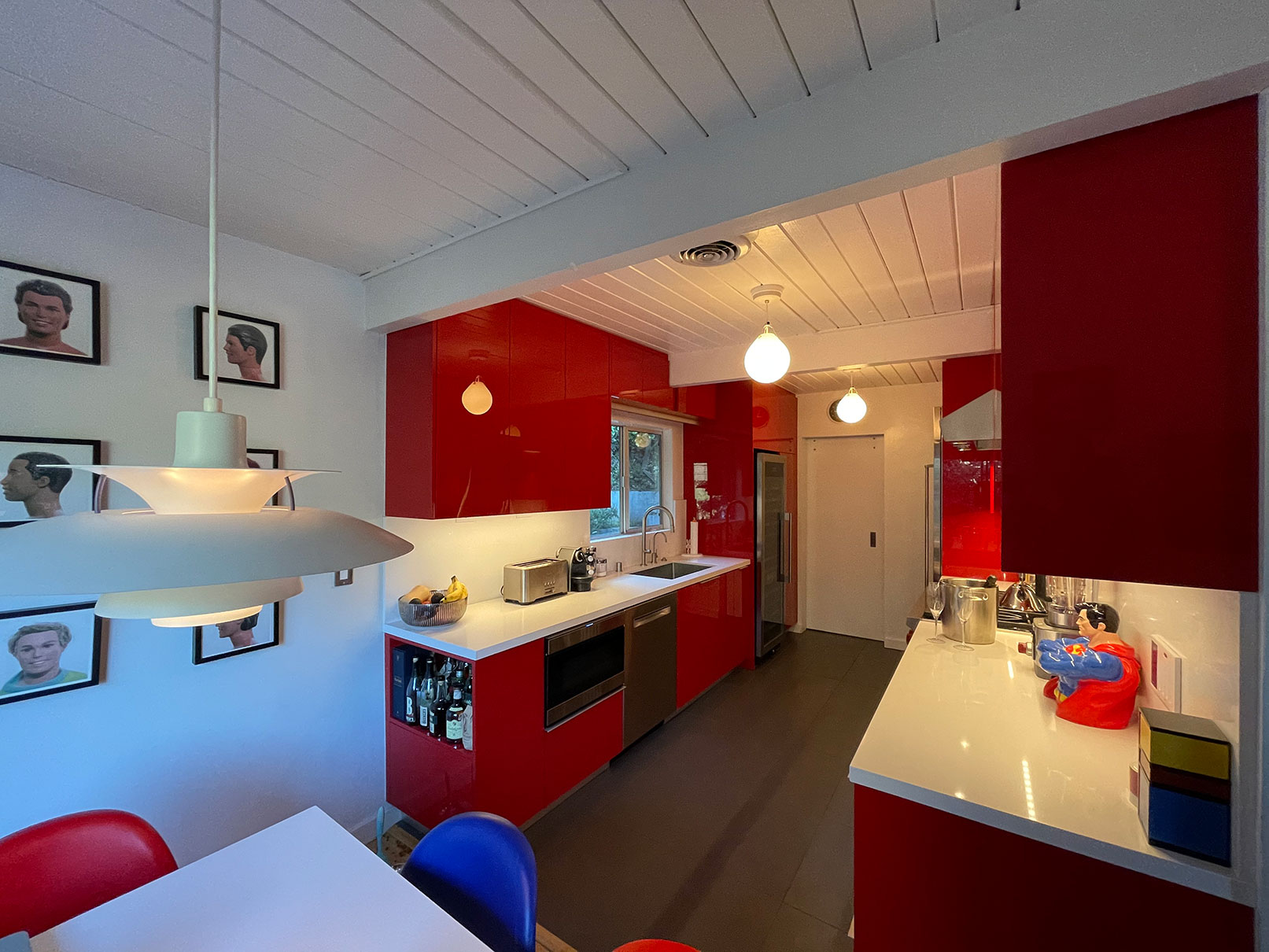
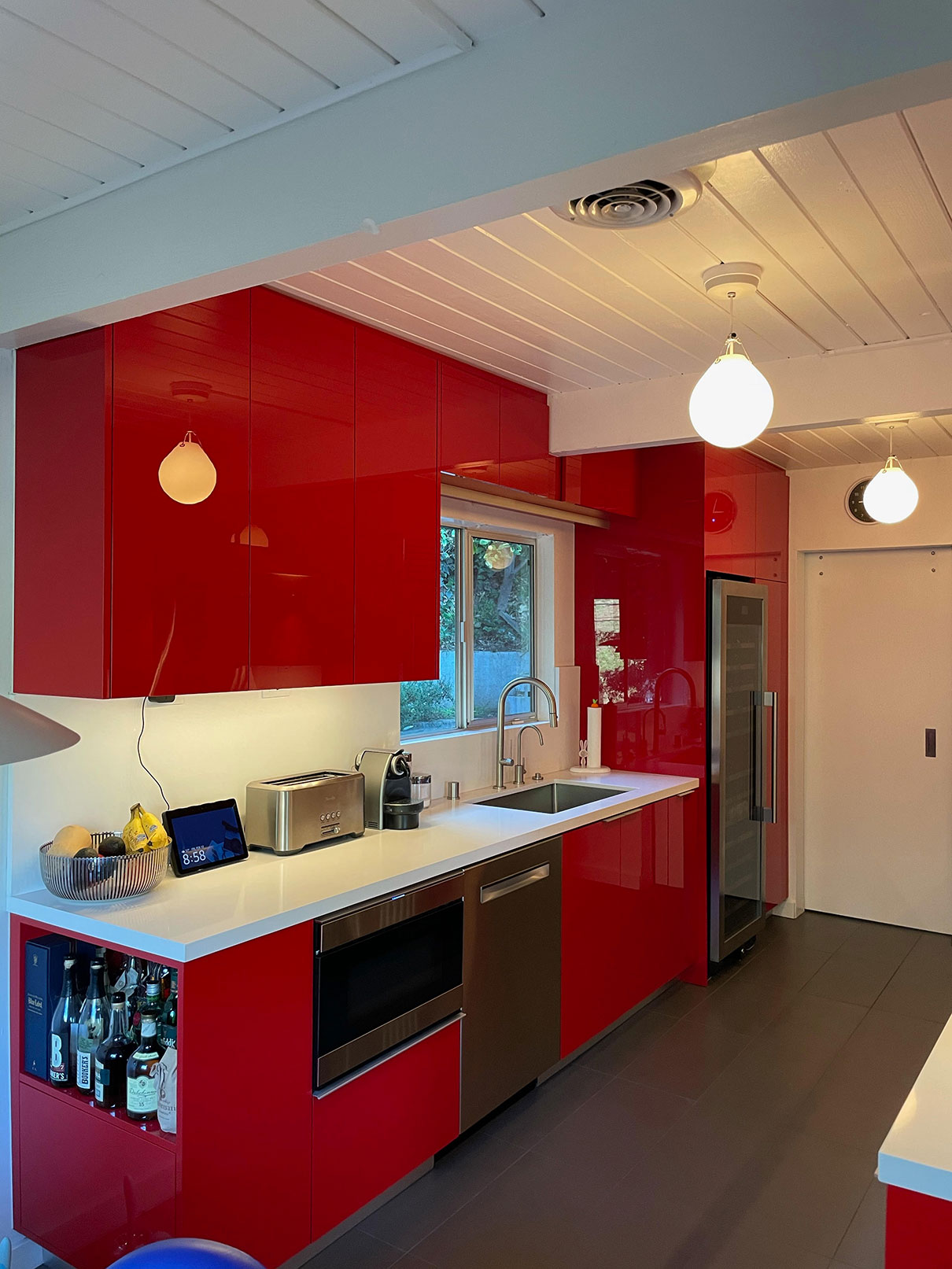
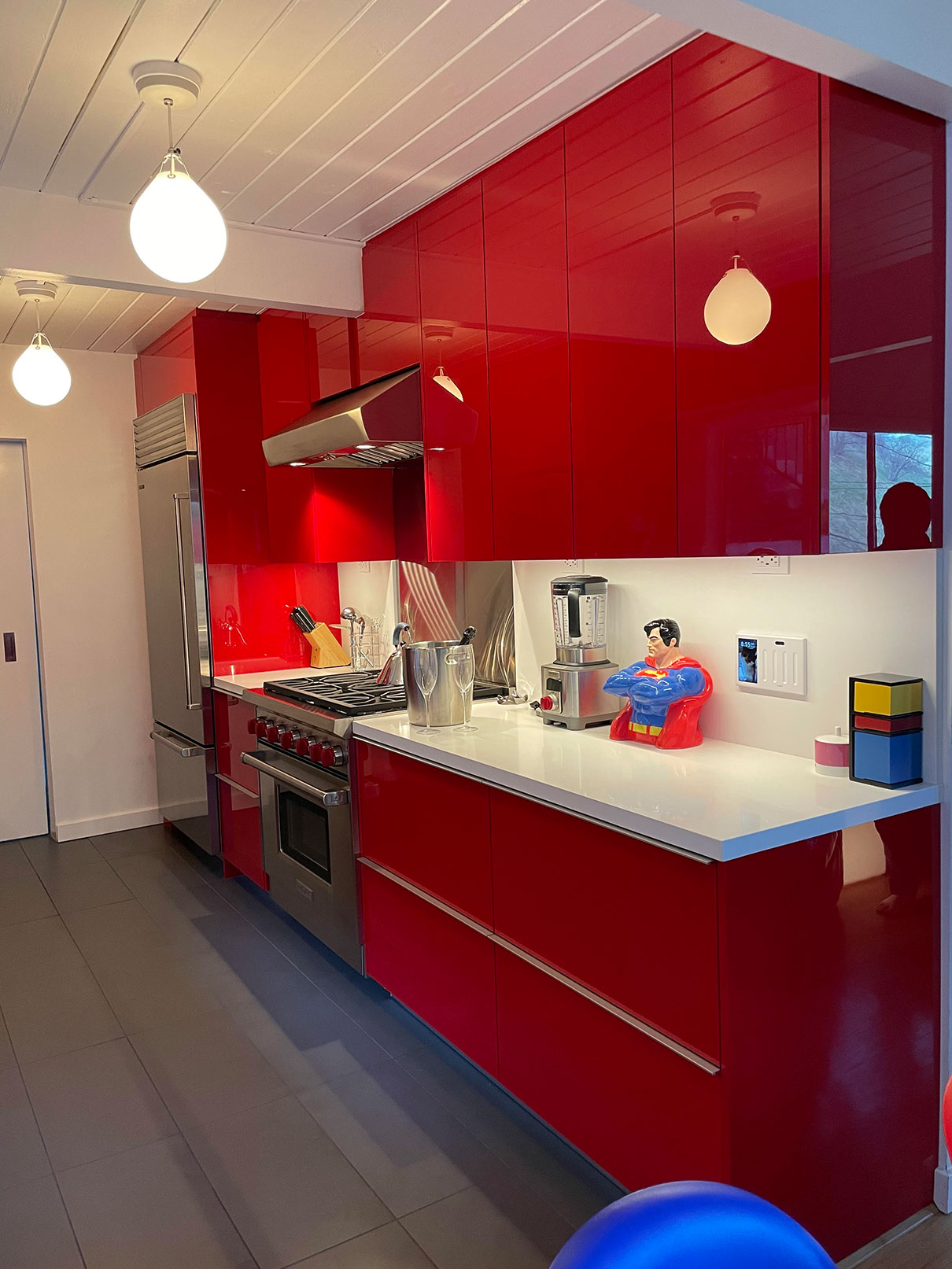
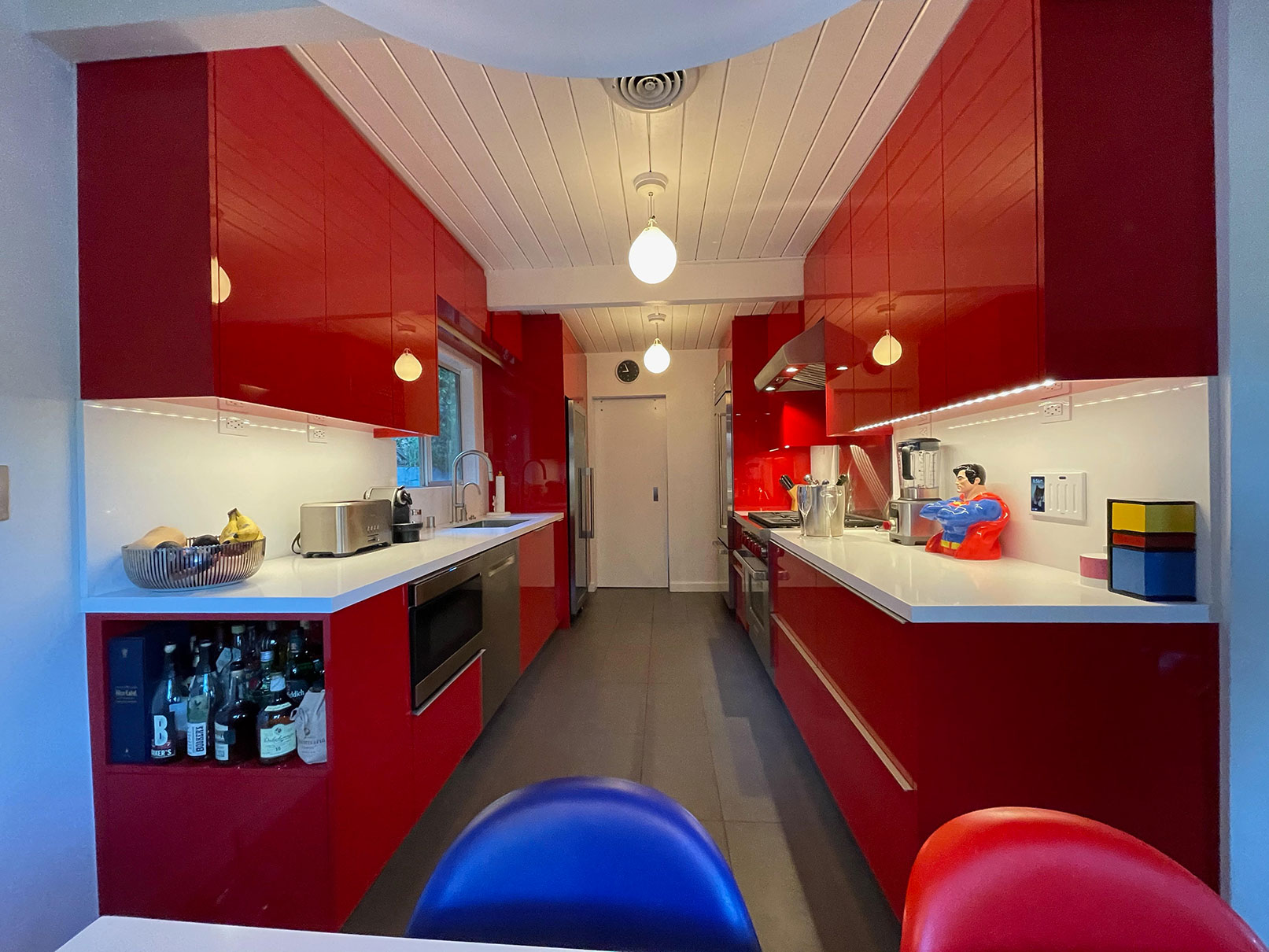
We we’re lucky enough to finish this red kitchen just in time for Valentine’s Day. This project consists of High Gloss Rojo Panels, a Grass Vionaro drawer system, Black Ash Veneer drawer inserts, and a fully integrated LED package.




Located in Manhattan Beach, this transitional home has luxurious finishes and a custom recessed spice niche with sliding doors. The open living room allows for a smooth flow between the common room, dining room, and kitchen. The kitchen is adorned with a lovely quartz countertop and island as well as integrated Sub Zero refrigerated drawers and sleek modern cabinetry.
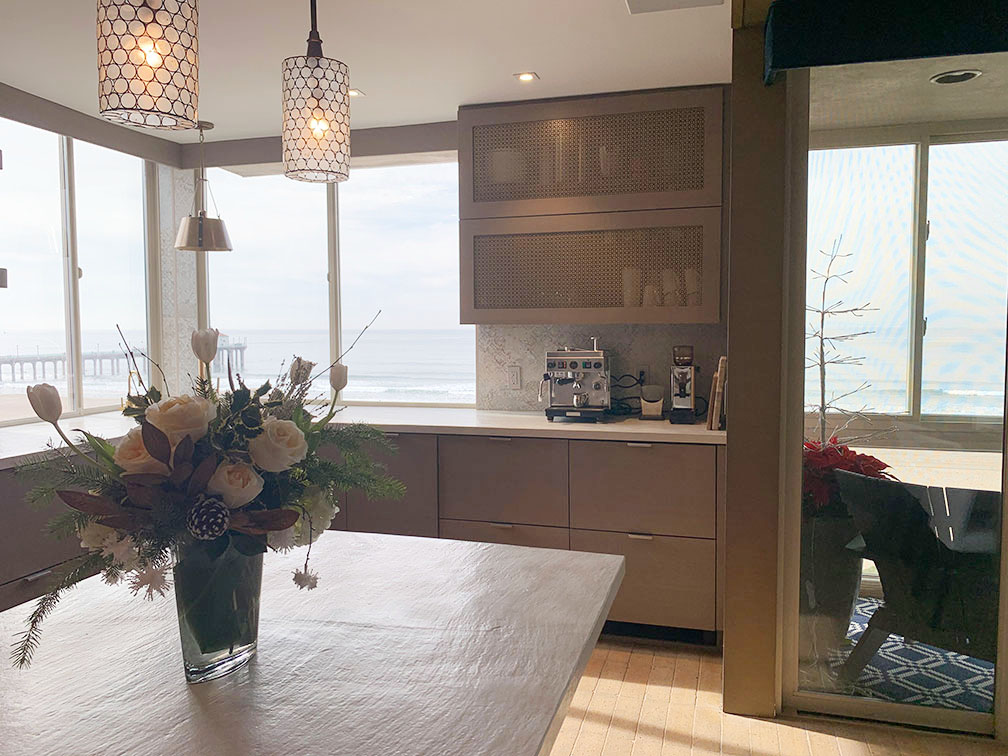
Cabinet finish: Manhattan Oak Wood Veneer
Blum Aventos HK lift system with brass mesh inserts
Blum Legrabox with tip on mechanism for a seamless look
Integrated Sub Zero Refrigerated Drawers

Island Finish: Fenix Supermatte Blu Delft
Thanks to the use of nanotechnologies, Fenix thermally heals any micro-scratches, and:
Is highly resistant to scratches, abrasion, rubbing and dry heat
Withstands impacts, acid-based solvents and household reagents
Significantly reduces the bacterial load making its surface hygienic and easy to clean
Liquid repellent and mold-proof

Sliding Door Mechanism with Brass integrated handles
Decorative Brass Mesh Door Insert
Great space saving Hack
In the early twentieth century, designers were forced to explore new design practices due to material shortages caused by WW2. This led designers to prioritize the function of buildings, eliminating ornamentation. Many asked the same question: “Can improvement be brought to this medium that takes it to a level beyond expectation?”
The world of architecture had remained steady for many years, often due to scarce resources and the need for form follows function in structural design and implementation. However, some refused to let their dreams remain limited to their imagination. By pushing the boundaries of materials, new technologies and art combined with globalization grew the new “modernist” world.
Of the early pioneers of modernist design, several names are as recognized as Walter Gropius, Mies van der Rohe, and Le Corbusier. These fathers of Modern Architecture blazed the path in creating many of the modernist themes that would quickly become synonymous with modernist architecture, and their fearless devotion to pushing boundaries still inspire designers today. This article will look at each man, shining a light on the unique contributions that each brought to this architecture movement’s birth.
The first and often most well-known was Walter Gropius, who made his mark on the world of architecture by creating an incredible home in Boston, Massachusetts, that featured glass, acoustic plaster, and chrome accents. This design style stood in stark contrast to the Colonial homes across the American landscape.
Born in Germany, Gropius grew up in a family of architects and joined Peter Behrens’ architectural firm in 1908. It was here that Gropius met and worked with fellow pioneer Ludwig Mies Van der Rohe.
The first design that Gropius offered the world was known as the Fagus-werk. The design of this factory that produced parts for creating boots not only impressed owner Carl Benscheidt but laid the foundation for a career that would see Gropius bring his impressive designs to nearly every style of residential and commercial property.
Just over a decade later, Gropius became the headmaster of Grand-Ducal Saxon School of Arts and Crafts in Weimar. Gropius soon turned the school into the famous Bauhaus, a place where aspiring artists, architects, and designers, could come to study and bring their own inspiration to life. Germany’s Third Reich regime’s continued threat led Gropius to move the Bauhaus to Dessau in 1930, and ultimately leave Germany altogether for Boston in 1936.
He built his family home, the Gropius House with typical New England materials like wood and brick but introduced Modernist features like long windows on the first floor and industrial materials like steel and glass. The home included custom furniture to maintain the Bauhaus philosophy of total art.
Gropius was later part of the design of Harvard University’s Graduate Center which was the first Modernist Building design for any major American University and seen as a turning point in the acceptance of Modern Architecture in the US. Here he combined modern elements of steel and glass with bricks of limestone to create courtyards and covered walkways, defining the spaces and enhancing the relationship between the building and environment.

For Ludwig Mies van der Rohe was known as a savant of modernist architecture due to the fact that he lacked any type of formal training. Yet, his incredible designs left no room for concern. Mies van der Rohe quickly rose the ranks of German architecture with his design of the famous Barcelona Pavilion of the World Exhibition in Barcelona. While still in his twenties, Mies van der Rohe also designed and brought to life homes such as Villa Tugendhat, in Brno, Czech Republic.
Mies van der Rohe’s architecture philosophy was built on a ‘less is more’ concept. This can be seen across his designs, with clean lines and wide-open spaces present in nearly every design. For Mies van der Rohe, the basic structures that built any building could offer the same beauty and inspiration as the outside elements.
A lasting legacy of Ludwig Mies van der Rohe is the campus of the Illinois Institute of Technology. A campus of gleaming glass, steel buildings, and brick gives an insight into the inspiration that drove one of modernist architecture’s earliest leaders.
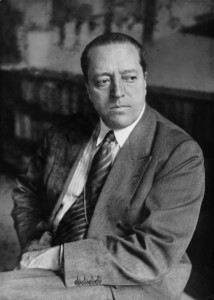
Le Corbusier, who took inspiration for his buildings and urban designs from modern engineering developments such as passenger jets, cruise liners, automobiles, grain silos, and so on. In his most famous book, ‘Towards a New Architecture’, he argued that ‘a house is a machine for living in’.
The final member of the early modernist trio was Charles-Edouard Jeanneret, known in architecture design as Le Corbusier. A Swiss-French author and architect, Le Corbusier built his very first home in 1907 at the early age of 20.
Travel across Europe took Le Corbusier to the spheres of various apprenticeships – culminating in time at Peter Behrens’ architectural firm. It is here that Le Corbusier may have brushed shoulders with Gropius and Mies van der Rohe.
Le Corbusier’s work shows influence from the world of geometrical forms and spatial elements, as well as an emphasis on concrete construction and landscaping.
Found within his famous work Vers une architecture (Toward an Architecture), Le Corbusier defined five specific elements of a modernist structure:
Elevated structure supported by columns made of concrete
The presence of an open floor plan
Various non-support walls (free facade) to allow open choices for wall placements
Ribbon windows that allow natural light to fill rooms
Roofed terraces and gardens for practical use
Not only did Le Corbusier leave an impact on the world of architecture, but he also brought his inspiration into the furniture industry. He created a line of furniture under the name “LC Collection” that utilized elements such as leather, fabric shapes, and chrome tubing to create modernist furniture that mirrored the human form.
The impact of these three pioneers of modernist architecture can still be seen and enjoyed around the world today. Any tour of famous architecture is sure to come upon a modernist design that bears the trademark look and feel of a Gropius, Mies van der Rohe, or Le Corbusier. A large amount of high end furniture mimics the designs of Le Corbu and Bauhaus as well. With a bit of knowledge about each man under your belt, you can begin to appreciate their gifts to the architectural world and implement them in new ways.
As 2020 is now in full swing, you may be turning your attentions to your home and thinking about giving it a new look and fresh look. If you are looking at investing in aesthetically pleasing cabinets, mirrors and other accessories for your bathroom, why not consider the range we now have available from Aquadom. Whether you are looking to completely renovate and remodel your bathroom, or simply want to switch out existing furnishings and furniture for something new, Aquadom’s collection has pieces that will appeal, regardless of your budget.
A member of the National Kitchen & Bath Association, Aquadom has a sterling reputation for designing and producing cabinets and other accessories that have modern appeal, are well-made using high quality materials and have a touch of class and luxury that can help elevate any standard bathroom.
With their Signature Royale line of products, the company has drawn on the collective experience of its team to create pieces that will give your home a unique and sophisticated atmosphere and appearance.
Even when you have the bathroom of your dreams and everything is in place, the range of products in the Royale Plus collection from Aquadom can give your bathroom that special finishing touch that will make it stand out. The bathroom should be a place of relaxation, cleanliness and luxury and that’s what you get with these accessories.
We don’t believe everything needs to be elaborate or intricate. Sometimes something simple can be just as eloquent and beautiful. If you are looking for cabinets that meet that description, the Royale line from Aquadom is perfect for your needs.
The Daytona line of products from Aquadom is what you need if want accessories for your bathroom that are designed with beauty and practicality in mind. Easy to reach and use functions help to make their beautiful products will make time you spend in the bathroom easier and more enjoyable.
If you are looking for something a little original compared to the mirrors that are often available in homeware stores, look no further than the Breeze model from Aquadom. This has been made with a unique 3-panel design that offers a pristine reflection from any angle. Perfect for when you are getting you are readying yourself for the day ahead.
If you have a tighter budget, then the Royale Basic line of products has been made with you in mind. Affordable and convenient, they still retain the sense of luxury that you would find in the more expensive Signature Royale range from Aquadom.
When is a mirror more than just a mirror? When it’s made by Aquadom. The Pacifica, with its copper-free construction and cool lighting strip will suit your minimalist design bathroom. Their heated and lighted mirrors have a dream-like quality to them that will help complete the modern look of your bathroom.
Contemporary kitchens often have handle-less cabinets and integrated appliances. Until recently, although the appliances had an integrated finish they would still compromise the aesthetic of the design due to their handles. Some appliance makers have caught up with the times by introducing “Open To Touch” appliances. Below we will list a few “Open To Touch” appliances that we expect to be kitchen staples this year.
Open Door Assist uses Auto Door Opening technology to open the refrigerator door with either a push or a pull, adding a luxurious touch and the option for a sleek, handle-less design.
This allows you to achieve a handleless design for your Sub-Zero Integrated Column refrigerators. The first few seconds of the video below shows how beautiful and easy this system is in action.
Miele’s ArtLine is their new line of ingenious integrated kitchen appliances that mix in seamlessly with the surrounding cabinets. The oven, speed oven and steam combination oven features Touch2Open, which effortlessly opens the door with a light touch of a finger on the sensor button. Their dishwashers have a Knock2Open feature, just knock twice on the dishwasher and it opens. With Miele’s built-in refrigerators you simply give the door a little nudge and they too will pop open. This is a wonderful feature because enables the fridge to match perfectly with kitchen cabinets that have no handles, which is quite commonplace in contemporary kitchens.
Bosch’s OpenAssist gives you the ability to open the fully integrated ActiveWater dishwasher with nothing more than a slight touch of the front of the dishwasher. This will partially open the door, making it easy to load and unload the dishwasher. More importantly, from an atheistic standpoint, it gives you the ability to match the finish and handle-free quality of the kitchen cabinets. Furthermore, some models have InfoLight® which displays information on the floor of your kitchen so you can see when your dishes are done without compromising the aesthetics.
Sharp’s exceptional Microwave Drawer features Easy Wave Open technology for touchless operations. Ovens and Microwaves cannot have to the same finishes as most cabinets for safety reasons but it still allows your kitchen to clean lines and match the design of the space. Simply wave up-and-down near the motion sensor and the microwave drawer glides open. With the touch of a button or a gentle nudge, the drawer smoothly closes avoiding any messy spills.
Hang Curtains near the top of the ceiling, not right above the windows. If you put your curtains about 1 to 3 inches from the top of the ceiling and let them go all the way down to the floor then it will make your space seem much larger.
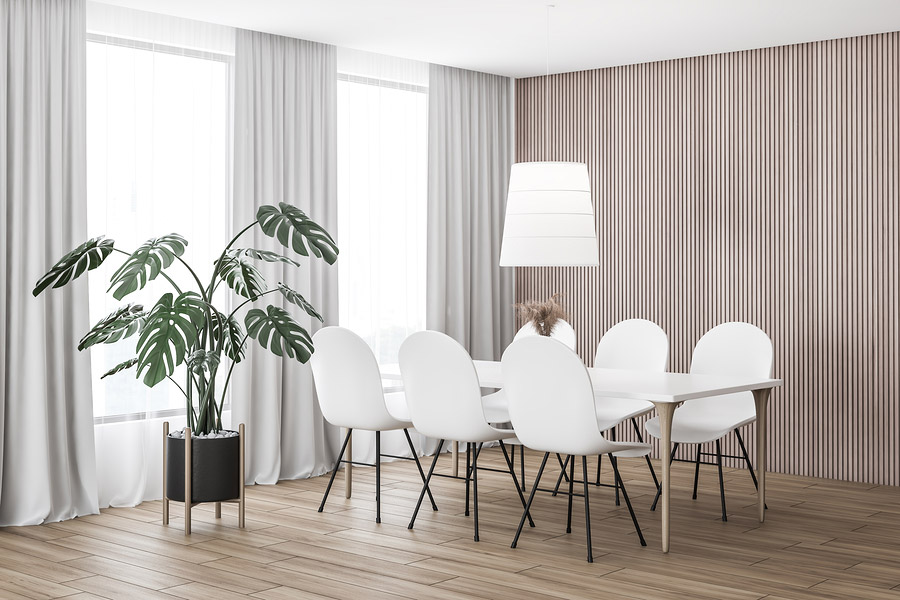
Remove unnecessary clutter and adopt an open floor plan wherever possible. The presence of space in a room can dramatically change how people feel when entering.
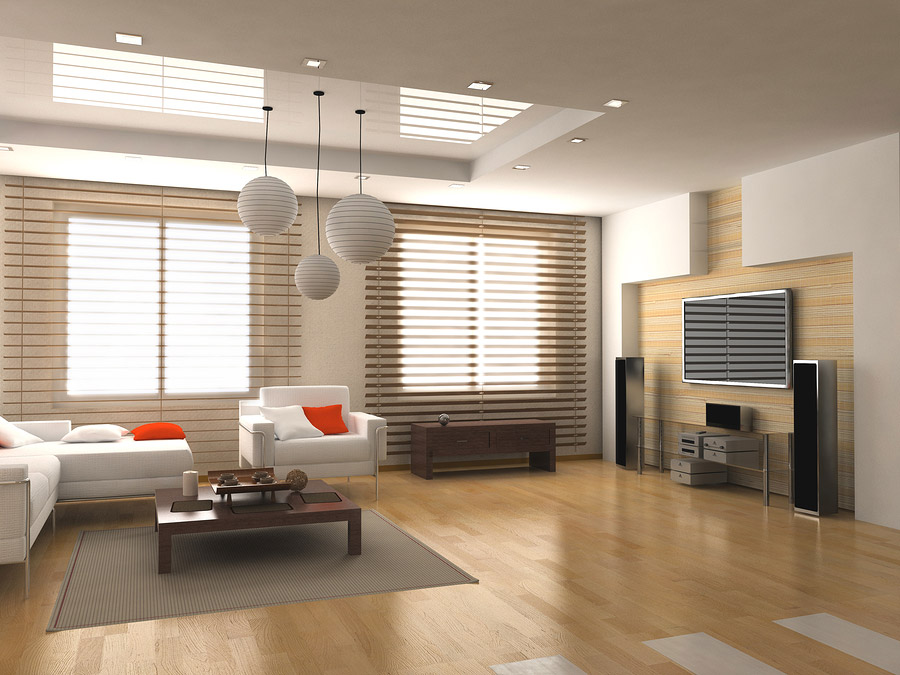
Having couches pointed toward each other instead of pointed towards a television does a wonderful job at promoting conversation. Unless of course you’re having a gathering specifically for a movie or sporting event.
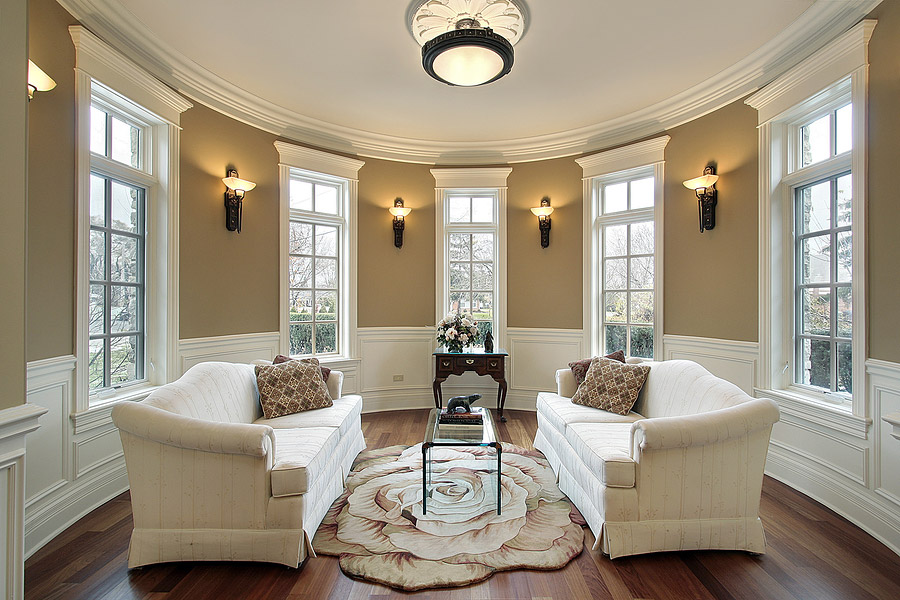
Find a piece of fabric that matches to color scheme of your room and place it over the television when you’re not using it. Even when a tv is not on it had a tendency to draw attention. Furthermore, the colors of the tv doesn’t usually compliment to colors of interiors. By choosing the right fabric you can kill two birds with one stone.
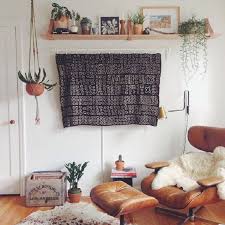
Plants are a great way to bring elements of nature into your home. If you want your interior design to seem peaceful, some strategically placed plants can do wonders. Arrange a couple of large plants next to furniture or in corners.
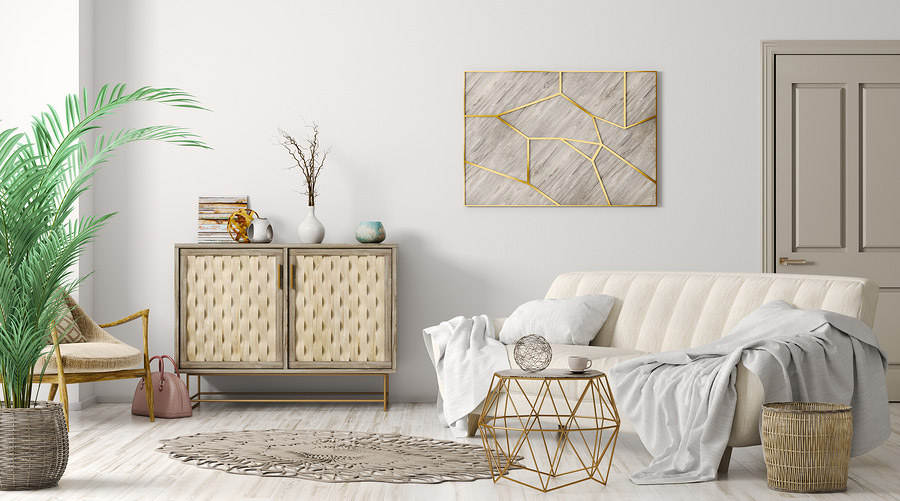
Hanging art on your walls doesn’t have to be expensive and can really make your interior pop. Two important things to focus on when hanging art are size and color. Measure your space and measure your art to make sure that there is enough open space around each piece to let it shine and to not feel cluttered. Furthermore, make sure the color of the art compliments the colors of the room.
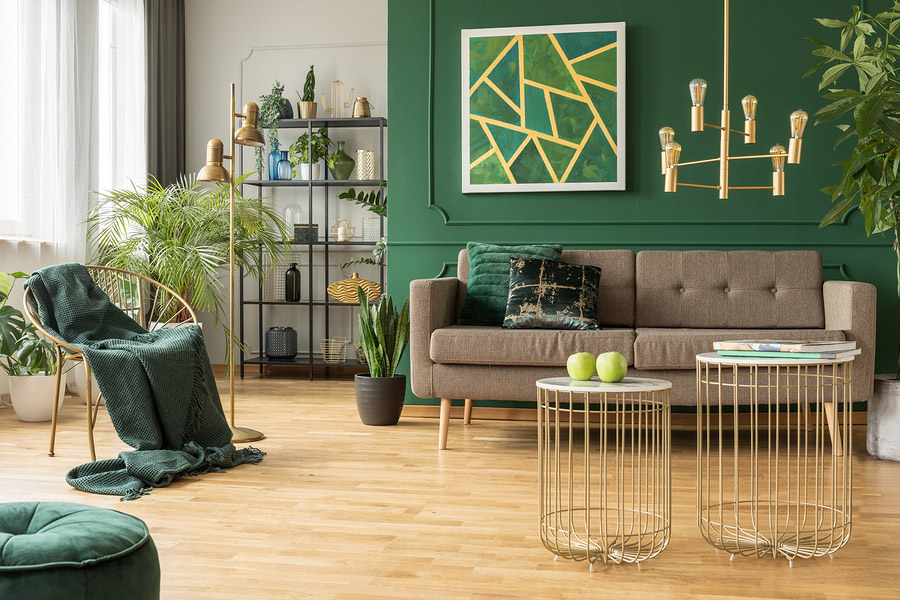
Mirrors can be used to make a small space feel larger. Secondly, mirrors placed directly across from windows can help bring in more natural light. This is particularly helpful in a room that doesn’t have many windows. Decorative mirrors can also be used in lieu of art to fill empty wall space. Large or small, mirrors add light and dimension to your living space.
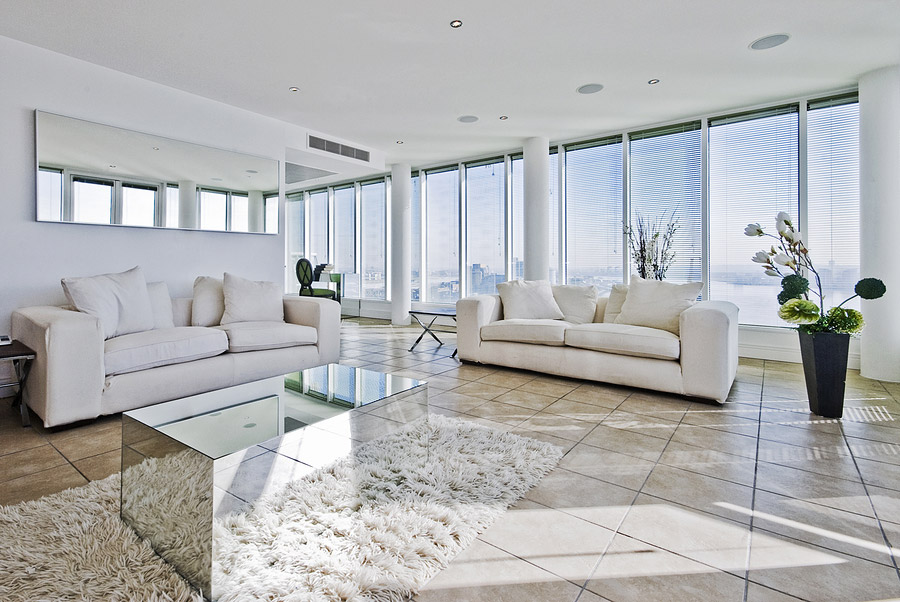
Rugs are a great way to life to wood floors. When employing rugs size is an important factor, a rug should be big enough so that every piece of furniture has at least two feet on it. If you use a rug that is too small, it can make your space feel uncomfortable. On the other hand, if its too large the space can feel claustrophobic. So take these things into consideration.
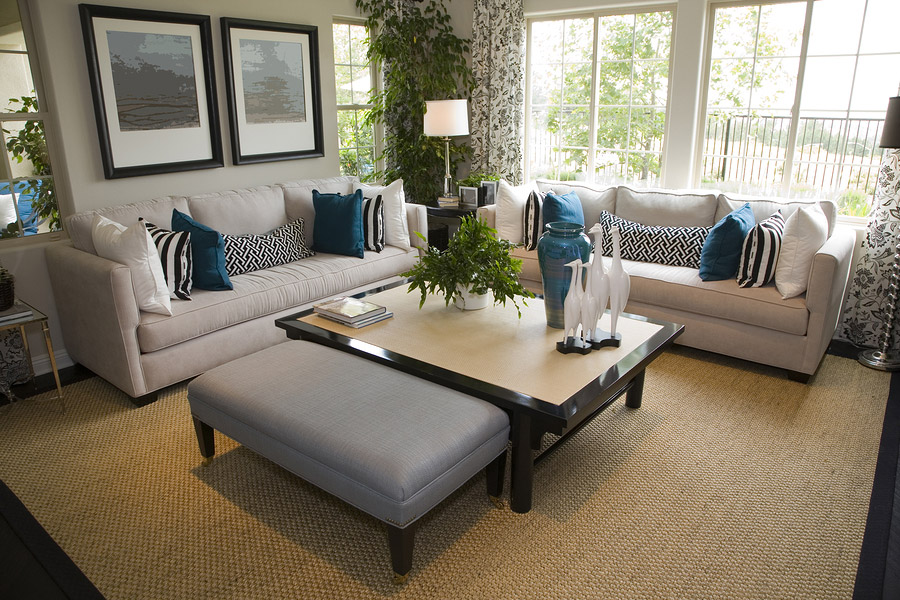
In mathematics, two quantities are in the golden ratio if their ratio is the same as the ratio of their sum to the larger of the two quantities. Interior designers often use it to ensure that the placement of objects in a room are balanced. One way to use it is to divide a space into approximately two-thirds for one section and one third for the remainder. For instance, if two thirds of the space on a floor is occupied then you should fill up one third of the space on the wall.
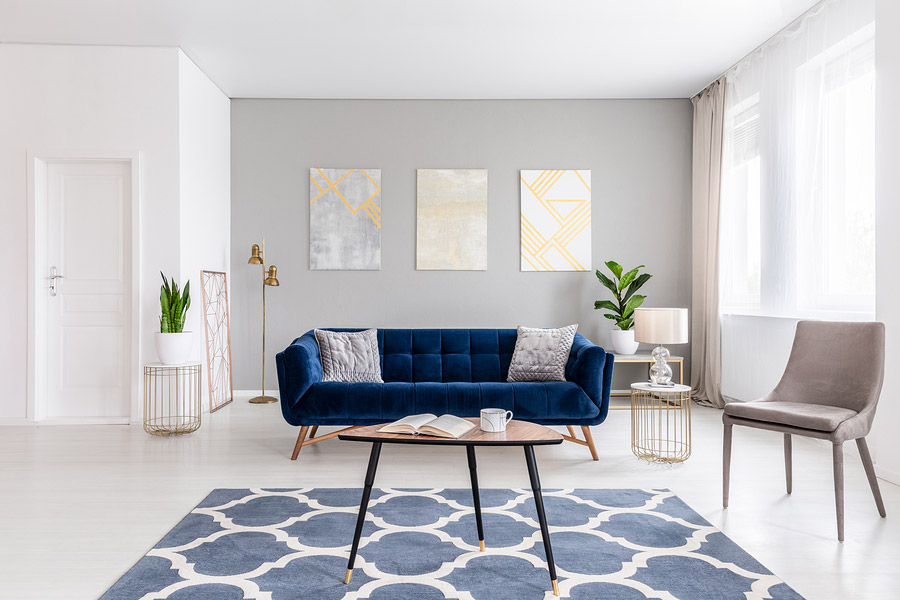
The color wheel is an interior design essential. It can help you to plan your color pairings or guide you out of a design rut when you’re struggling for inspiration. Use it to help you come up with complementary schemes. This means using colors from opposite sides of the wheel.
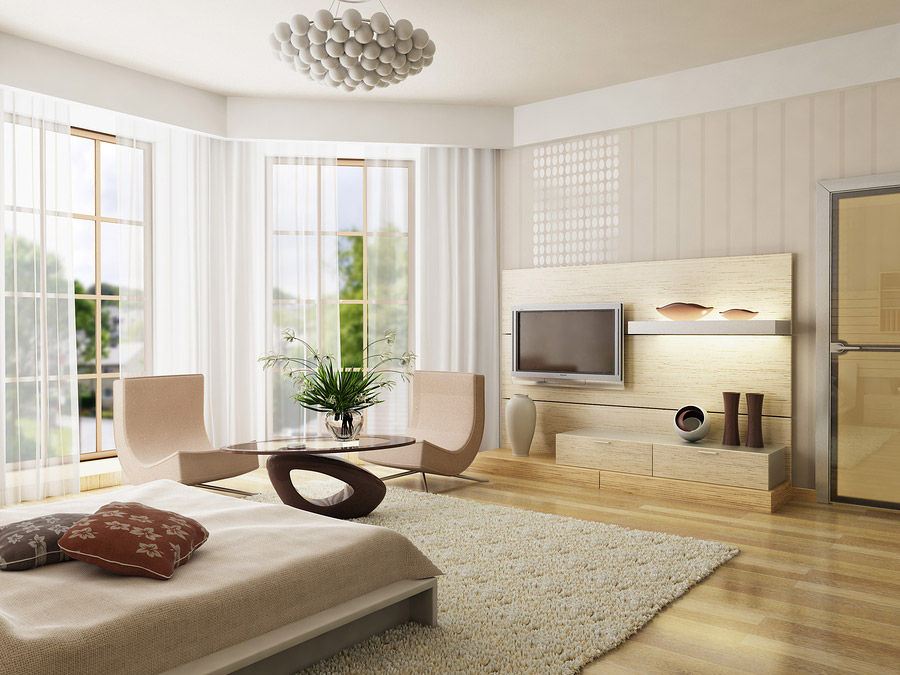
As humanity was collectively spending more time inside, interior design and architecture grew in artistic relevance. Sophisticated materials, design elements, and perceptions of space and light became worthwhile as men and women relied less on physical work outside in the fields. Hence it is an art that first emerged in more advanced societies. Furthermore, creative explosions in interior architecture would often coincide with golden ages. In this blog, we will present an overview of interior architecture’s evolution overtime.
The first sophisticated interior designs emerged around the Mediterranean, where Greeks and later Romans invested in interior spaces to display their culture, traditions, and way of life. Romans have left mosaics and frescoes depicting mythological scenes, historic, and family events. The architecture of a Roman citizen’s home is a reflection of the social status he and his family have, but also his rank in the political and tribal hierarchies. In some ways this is still true in today’s society, because trends in design often correlate with how much wealth an individual has.
The collapse of the Western Roman Empire in the 5th century was a set-back for all arts, including interior design and architecture. We didn’t see very much art until the 8th and 9th century, when Gothic style emerged as a mix between Germanic and Roman influences. The Medieval approach to interior design was heavily oriented towards religion. Indeed, the inside of official buildings representing an institution or a powerful lord’s authority were laid out to remind beholders of God.
Buildings sanctioned by divine authority were designed to provoke spiritual awakening or provide a comfortable environment for meditation or prayer. Patrons sponsored the best masters and craftsmen, who carved out, painted and erected the most elaborate pieces of design in human history. A rich individual would find it advantageous to associate his name and fortune with artworks that magnify human abilities for the glory of God. The ecosystem created between institutions, patrons and artists allowed countries like Italy, France and Spain (under Muslim rule) to become cradles of innovative and breathtaking architectural achievements. Materials used varied, however the proper Western European style was characterized by dark shades with materials like dark wood or stone. Marble is often used, especially for Gothic structures (Cathedral of Koln, Duomo di Milano). The spectrum of used colors varies; the north is characterized by black and white contrasts while the south integrates many secondary colors.
When The Renaissance kicked in the near the end of the 14th century, the ecosystem previously described saw an additional source of patrons: rich merchants, soldiers and politicians that derived their power and authority from the world itself rather than divine figures. While the religious angle was preserved and experienced evolution and shifts, renaissance art was characterized by a return to nature. Baroque for example reintegrates natural elements by randomizing structures and design languages.
Baroque comes from the Portuguese word “barocco” which means “irregularly-shaped pearl”. Baroque interiors often play on contrast, overwhelming the beholder with light or darkness, brightness or blurriness. Artists were experimenting with shapes, materials and volumes, coming up with new models of interior layout. The baroque style found its full expression in Mediterranean countries and in the New World; Spanish colonial baroque characterizes the historic settlements in the Americas.
The baroque style has contaminated the neo-classical overtime, especially in Britain. Robert Adam has operated this mix in the mid-18th century. While he was working with neo-classical frameworks and overall design language, his innovative integration of baroque design elements (still life images, ribbons, medallions etc.)
The profound shift the industrial revolution brought on the European real estate market shifted interior design priorities. Habitability was increasingly becoming a focus, especially with the second industrial revolution that brought to consumers new inventions (massive electrification). 19th century interior design and architecture is mainly oriented towards neo-classicism (one of the best examples being France and the neo-classical redesign of Paris in the late 19th century). Rich owners often romantically reactivate aristocratic designs, as a clear signal of identification. The materials used are also a display of wealth, as colonial expansion provides consumers with more exotic materials.
The neo-classical approach, while apparent in France and the United Kingdom, does not characterize other countries like Italy. In the industrial north, the emergence of the liberty style is a clear return to the Renaissance spirit. While remaining classical in its structure (notably for its use of horizontal symmetry), the liberty style incorporates baroque elements and the Greco-Roman fascination for floral motives and mythological depictions.
Art deco would later build on this liberty style foundation. In the beginning of 20th century, Italy is experimenting a cultural shift as it is molded for the first time by a centralized national state. Internal migrations contribute to combine regional arts and techniques. Art deco is a natural result of such a phenomenon. Rome features an entire district designed and built by the art deco architect Gino Coppedè. It is the most exhaustive use of art deco design elements in a real urban setting. It is characterized by the use of arabesques (inherited from the Neapolitan neo-bourbon style), curves and shapes that insisted on transmitting an impression of movement and fluidity. It was the artistic representation of humanity’s spirit at the time: fast-paced transformations that shaped the destinies of millions like never before, alongside unprecedented technological progress.
The rise of fascism in the 1920s introduced futurism in Italian and European interior architecture. Futurism was heavily characterized by rigidity. This is apparent when when observing the dynamics of Fascist architecture. Squares and rectangles are at the center of any fascist compositions (cf. The Italian Civilization’s Museum in Rome, the Court of Justice of Milan, etc.)
Both styles did not survive the second world war. Art deco was considered vulgar while futurism was perceived as grim. The discovery of new styles thanks to the increasing European integration and the spread of the American way of life helped shape a new conception of style in Europe. Scandinavian design (with Danish and Swedish design firms gaining worldwide recognition) set the pace for an approach focused on providing an experience, a mood, rather than a simple functionality. With the influence of pop art and the 1970s, designers started to experiment with colors, materials, shapes, volumes, textures and overall structures like never before. Plastic and the advent of consumerism provided opportunities at every level to create art and innovate.
Today the myriad of interior design and architecture schools is so diverse, that willing to identify the main trends would be challenging. However, we can notice that the use of design elements in a certain way contributes to create at least bridges between somewhat similar approaches. Indeed, modern architecture has greatly valorized natural light, functionality, space optimization and connectivity. These are defining features of recently built mega-structures (Sydney opera house, Burj El-Arab, Petronas Towers etc.) and contemporary interior design. The use of glass, aluminum, steel and increasingly carbon fiber has favored this trend, especially with the rising interest for urban solar exposition.
In conclusion, design languages have varied according to the availability of materials, technological capabilities, cultural preferences and geographic necessities. While all these criteria determine how a community will organize its way of living, the social and cultural backgrounds of the elites (who were the ones building the most durable structures) were displayed through interior design and architecture. Not only to give a concrete basis to their abstract ideas (God, nature or ancestry), but also to set the pace of the entire society, as the elites’ artistic, philosophic and ethical frameworks are effectively the entire society’s references.
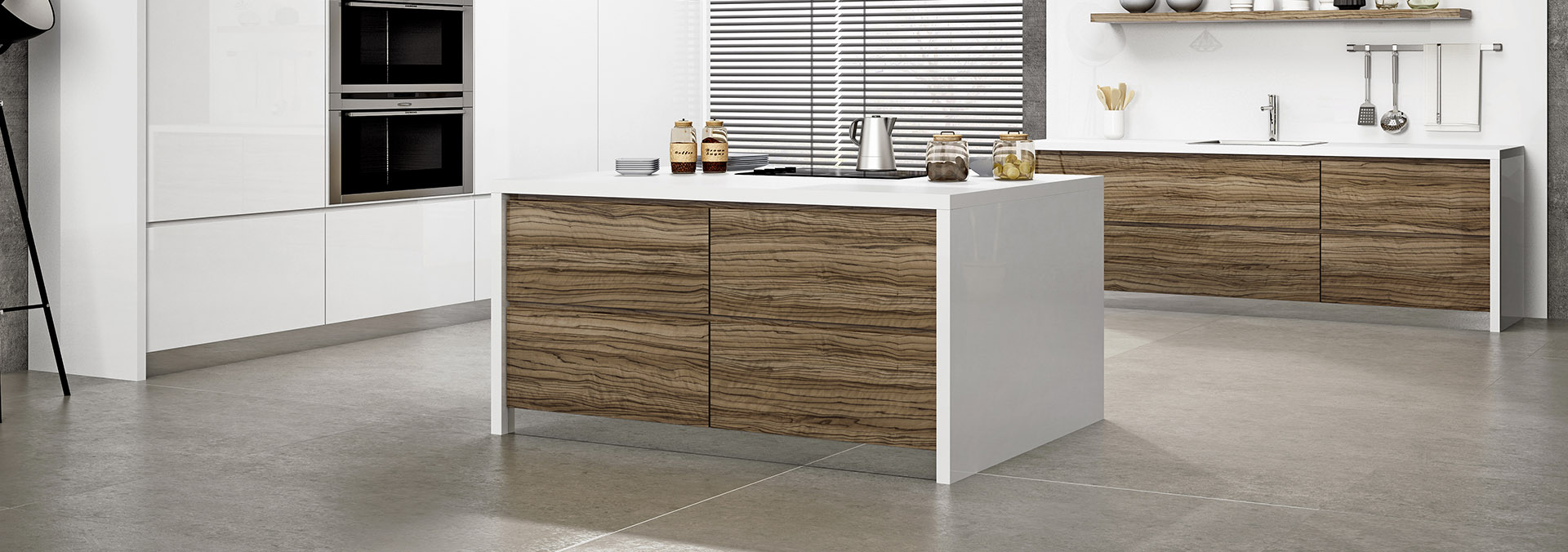
For a number of years Europe has been setting the standard for contemporary cabinet design. European design maximizes clean lines and functionality. Full overlay doors are attached directly to a sturdy, thick cabinet box, eliminating the need for frames, including awkward center stiles. The advantage is that cabinet and door lines are flush and drawers can be larger because of the lack of frames so you are maximizing space. Euro-style cabinets are simple, elegant, and provide exceptional usable storage space. One of the things we do here at Studio Haus is make kitchen cabinets here in America that use a lot of the trends that are popular in Europe.
We don’t do this simply because it’s popular. This design is the best option to build cabinets that achieve an open feel. They result in a bold, clean, and streamlined aesthetic. If you want your kitchen to seem modern, contemporary, and/or trendy then you’ll likely want a kitchen that is inspired by whats currently happening across the Atlantic.
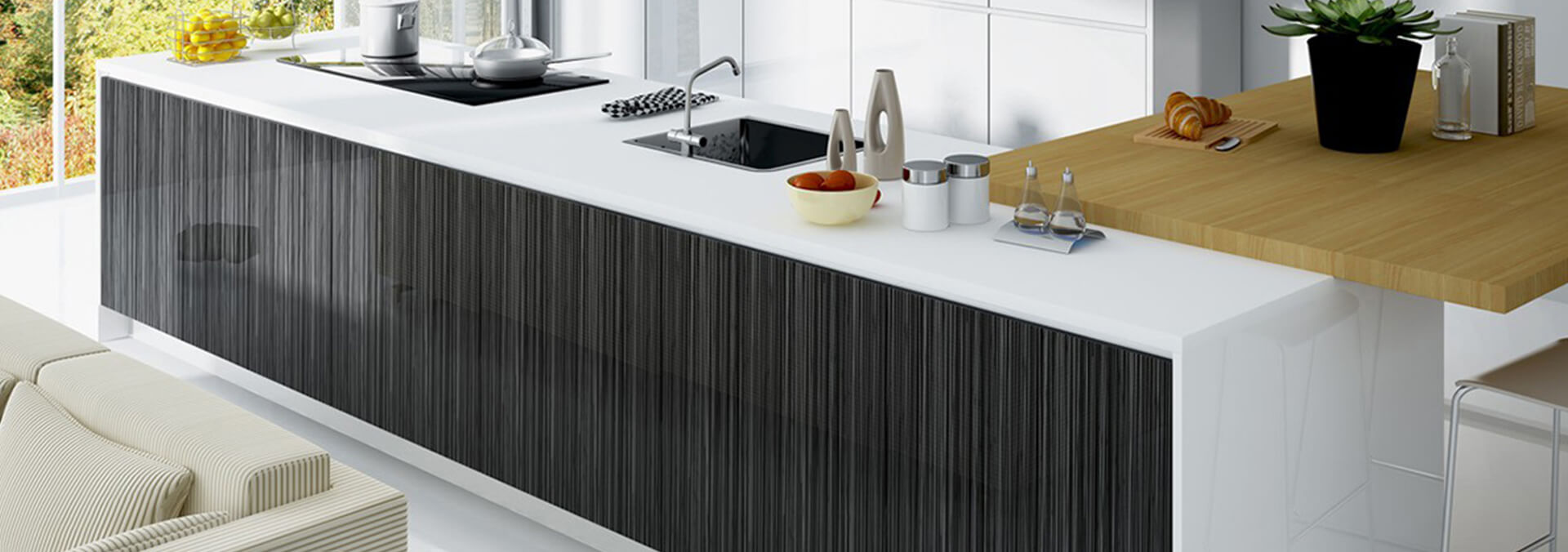
Another advantageous aspect of the current European style is high functionality. They never compromise functionality for design and spend a lot of thought figuring out ways to make a kitchen more comfortable and easier to use. They have developed new technologies that consume less space. Some of these new developments are pull-out plate racks, specialized drawers, organized pantry units, integrated appliances, and Aventos lift systems by blum. Furthermore, their frameless construction allows them provide more storage space than that of traditional cabinets.
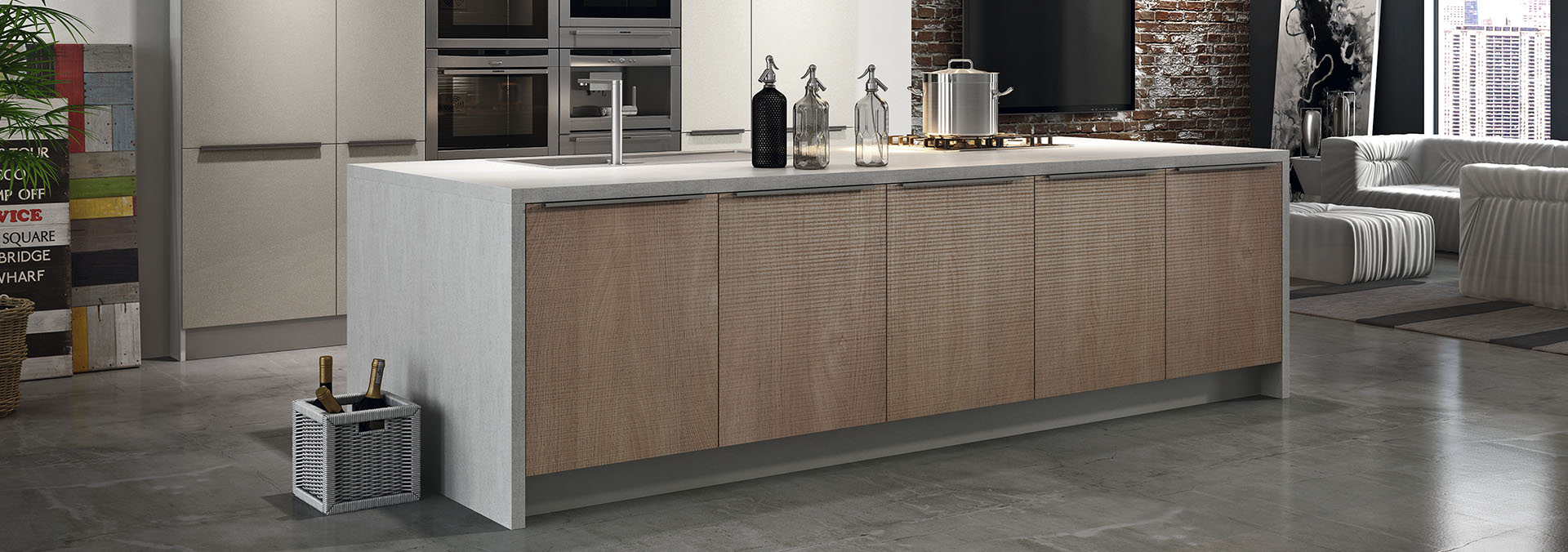
Collaborating on a journey of space alchemy is what we love to do. Our passion is transforming neglected areas into architectural enhancements that uplift and excite the senses.
We innovate products that integrate well into contemporary settings. Our advantage is creating the experience one gets from world renowned European kitchens, without the premium of international shipping costs and 4 month lead times.
All components of our cabinets are produced with state of the art machinery to ensure the highest quality and precision possible.
If you are looking for modern, contemporary kitchen cabinets that are inspired by European trends then call 1-888-528-2921 or fill out the form below.
Matte kitchen cabinets have become a staple in contemporary design. Why is it that they have become so popular?
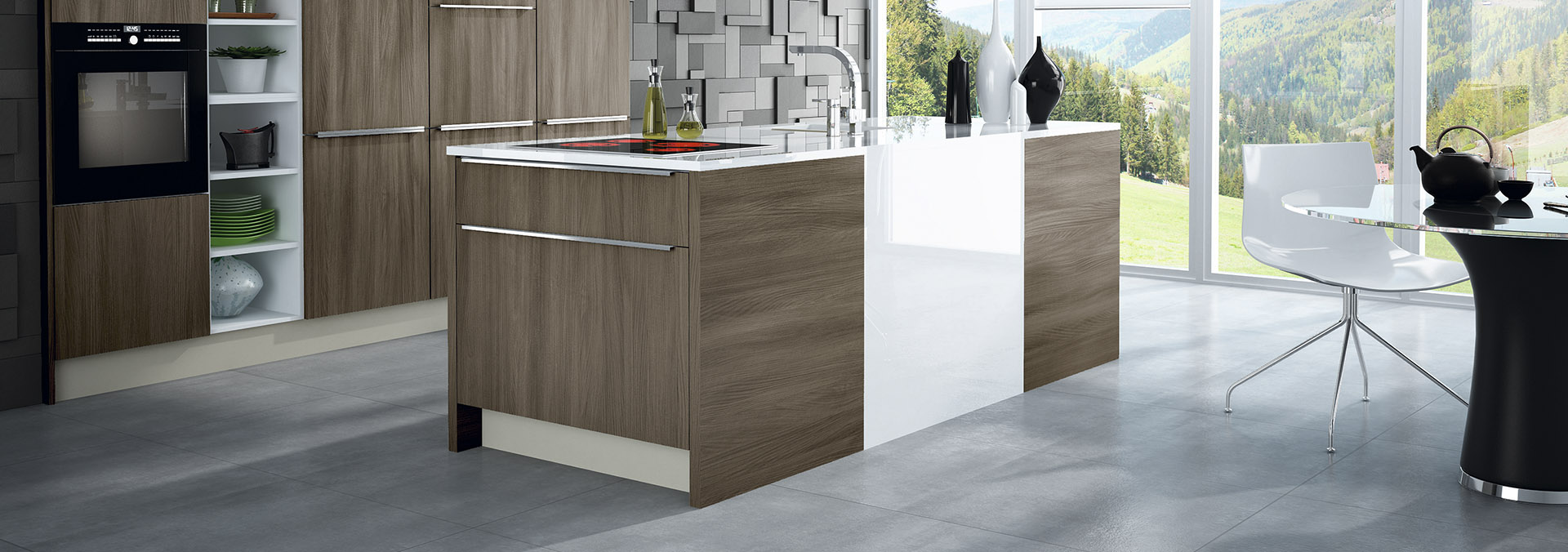
A surface with a matte finish absorbs light, as opposed to reflecting light; which is what high gloss finishes do. Light absorption results in a more muted look. Since they don’t reflect light, they won’t help to make your space feel any larger, if that’s what you are trying to achieve. This was discussed in our previous blog post about the advantages of high gloss finishes.
The real advantages of matte kitchen cabinets are the look and feel. Most people find them quite ascetically pleasing and they’re very soft to the touch. When choosing this type of cabinet door you’re not necessarily making the decision because it has a lot of practical advantages. You’re doing it because they’re beautiful, and you consider your kitchen to be a work of art. If you have a large, open space to work with where you don’t need to create an illusion of more space then matte cabinets can be breathtaking. Moreover, the experience of opening and closing them is considered by many to more pleasant.

Our matte cabinets are a high-tech product that has our seal of quality and exclusivity, the development has invested more than a year of research and development. We carry a revolutionary new finish, with a pleasantly soft texture, supermatte finish, and high resistance.
This new surface is characterized by increased resistance to scratching, abrasion, wet and dry heat, and superb performance and resistance to common cleaning products, compared with similar products on the market.
You can browse our selection by clicking on these two links: Textured | Flat
Whether you’re building a new kitchen or remodeling an old one, you’re probably aware of how big of a factor the cabinet finish is. All the main styles of cabinet finish (matte, textured, veneer, & high gloss) have their advantages. So it’s not necessarily about which one is better, it’s about which one works best with your specific circumstances.

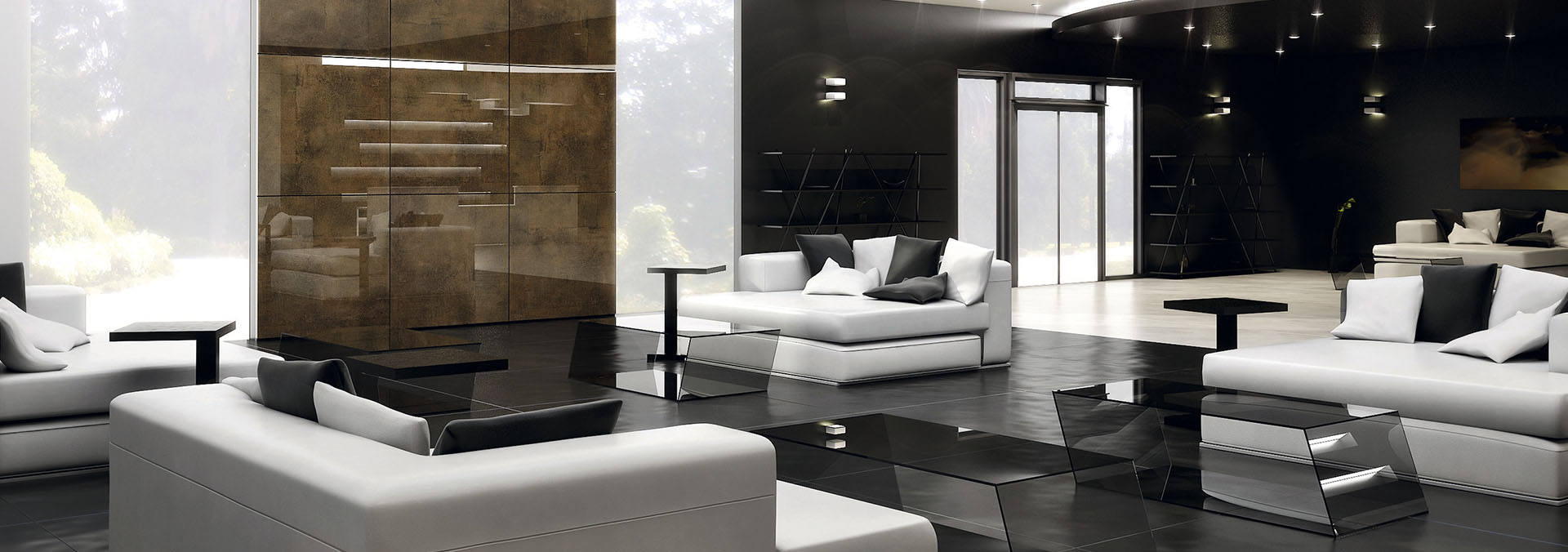
Studio Haus uses a technologically advanced product that undergoes a unique industrial process which results in the outer panel having a high gloss finish, and leaves the other face coated with a decorative paper in the same design.
This product has excellent physical-mechanical response compared to other alternative products, highlighting its scratch-resistant, surface quality, high brightness as well as light stability towards colors. These characteristics make it well suited for vertical applications in kitchen, bathroom, office and home furniture.
This manufacturing process allows not only solid colors but also a wide range of designs, such as wood, marble, stone, and many others. A quality that makes it a highly versatile and decorative product.
Select at least 2 products
to compare
